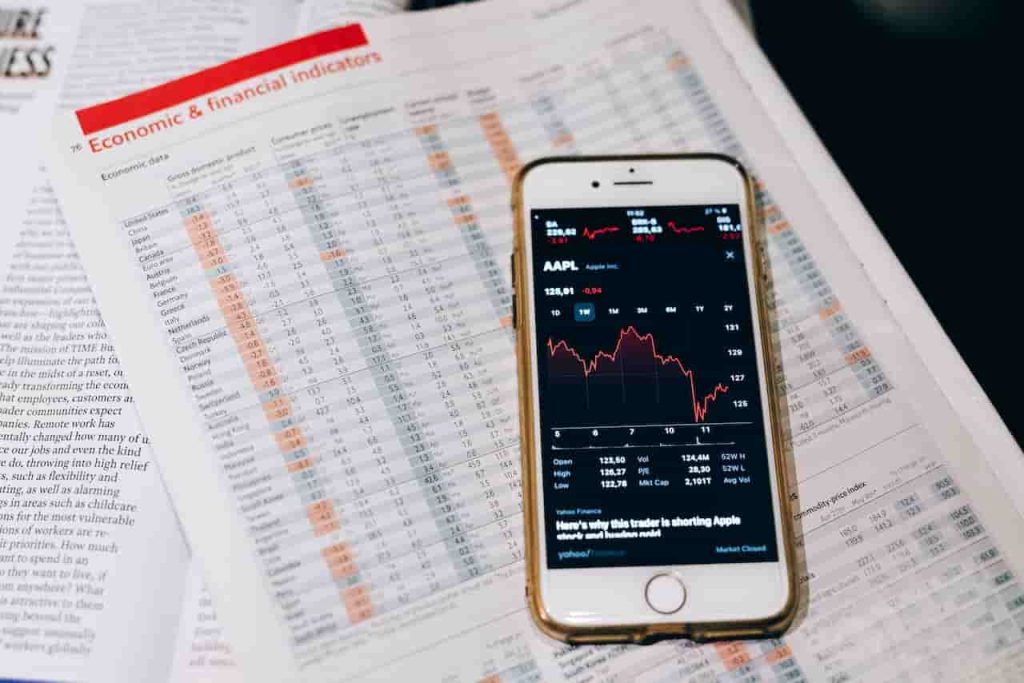Table of Contents
Stocks and bonds are securities that take the form of either a document or a record in a computerized system in a securities account. They are the most popular assets that most investors, even beginners, choose to invest in. Therefore, it is worth knowing what they are and how to invest in them.
Stocks and bonds – what are they?
Stocks, although chosen by people beginning their adventure with the stock market, are intended rather for experienced investors who are not afraid of high risk, but, on the other hand, count on a possible large profit. Bonds are characterized by a completely different nature – calm and safe, but also less profitable. What exactly stocks and bonds are characterized by will be presented below.
What is a stock?
These securities are spoken of in the context of joint-stock companies, listed on the Stock Exchange. In particular, they are a so-called equity financial instrument, confirming participation in the capital of a listed company, and also allows participation in profits and attendance at general meetings of shareholders.
When it comes to investing in stocks, once a year in joint-stock companies a decision is made on what to do with the profit earned. The most popular solution is to pay out the funds through dividends. However, many companies try to invest the surplus in order to strengthen their decision in the market. In this case, shareholders benefit by getting a higher unit value on their shares.
Can stocks differ from one another? It turns out that yes. Shares can be divided into registered and bearer shares. The former identify a specific shareholder – his data are recorded in the securities register. In order to effectively transfer ownership of shares, it is necessary to hand them in, but also to draw up a written declaration of intent to sell them.

On the other hand, when it comes to investing in bearer shares, in this case the name of a specific shareholder does not appear, and the transfer of rights is carried out simply by handing the document to the purchaser. However, it should be noted that such shares cannot be issued to the new owner, before the full payment of the amount due for acquiring them. In a situation where partial payment is made, the shareholder receives a temporary registered certificate.
When deciding to invest in stocks and bonds, it is worth knowing that shares are also divided into preferred shares, which contain the entitlement to, for example, two votes at a general meeting. Usually their buyers are the founders of the company, who therefore want to exercise control over the business. The next preference may relate to the payment of dividends. Those who own this type of shares, can count on a higher profit, when distributing surplus income.
What are bonds?
Bonds also debt securities, which state the fact of incurring debt through the issuer of the bond to the buyer. In this case, the role of the issuer boils down to paying interest to the holder, as well as, at the time of purchase, returning the nominal value.
In practical terms, this mechanism refers to the Treasury’s indebtedness to its citizens or to foreign investors. In addition, the issuance of bonds can also be done by a municipality or a private company. As for investing in bonds, the interest rate depends on the creditworthiness of the issuer. In addition, it is commensurate with the risk incurred, that is, as a practical matter – low.
The most trusted bond issuers are the governments of the most economically developed countries. Then bonds, issued by companies, are taken into account. Their degree of risk, as well as reliability, is assessed by independent financial institutions.
When deciding to buy bonds, it should be noted, there are several types of prices. Initially, the nominal price is determined. Interest is calculated on its value, as well as the value at which the issuer will redeem them from the buyer after a given period of time, about 1-5 years or even more.
The issue price, on the other hand, is the value at which bonds can be bought. Its price may be lower than the face price. It all depends on the issuer’s assessment of the chances of a successful issue. Once the issue is sold, the bonds are listed on the stock exchange. Then the price is no longer set by the issuer, but by the market – through the relationship between demand and supply. In this case, one can speak of a market price. However, it should not be considered the price of payment at the time of buying bonds on the exchange. The actual translator amount must be increased by interest. It should also be added that the value of interest is published daily, in the financial press.
Stocks and bonds – so how do they differ? From stocks, bonds differ in that their holder has no rights over the issuer. This includes such rights as joint ownership, the right to attend general meetings and dividends.

Why invest in stocks?
Although there is some risk involved in investing in stocks, they are still very popular among investors. Their advantage is very often the high liquidity of the markets, making it possible to buy or sell shares at almost any time. Low fees and the possibility of self-management of the portfolio are also important advantages of equity investments.
However, earning money on stocks also has disadvantages, such as virtually no ability to influence the business, in extreme cases even bankruptcy and low awareness of retail investors.
Long-term valuation of stocks
The main factor that makes investing in stocks so popular is long-term profitability. For investments to be successful, the return on investment must beat inflation.
Right to dividends
The annual percentage valuation of shares is one of the options that an investor can receive from equity investments. The other option is the systematic payment of dividends. However, it is worth remembering that not every company pays dividends and they are not always equal.
The amount of dividends is expressed as a fixed amount per share and is one of the factors that affect the price of shares. Its size usually depends on the company’s profits, but there are companies that do not have profits and do not pay dividends.
Payment of systematic dividends is a very desirable factor for individual investors, but also for institutional investors, which very often determines whether they will buy shares in a particular company.

Portfolio diversification
For some investors, investing in stocks can be a major source of income, while for others it is just a form of diversification of personal finances.
Buying stocks is not difficult or complicated and has quite a few advantages over, for example, investments in artwork or real estate, such as easy access, high liquidity, low fees, etc. In addition, the investor can benefit not only from a rising stock price, but also from systematically paid dividends. Therefore, it is no wonder that investing in stocks is becoming increasingly popular.
What is a dividend?
A dividend is a portion of the profit that a company pays out to shareholders. Any investor who owns shares in a company that pays dividends is entitled to the payment. The date and amount of dividend payment, is decided by the company’s general meeting.
How to trade shares?
Investments in shares are traded on stock exchanges from all over the world. Currently, stock trading is based primarily on the Internet environment, which makes it possible to either buy or sell the required titles from home using a smartphone or computer.
How to buy stocks?
A novice investor who takes his first steps in trading should enter into an investment account agreement with a brokerage house. Its purpose is to store and trade securities, as well as other financial instruments.
An investment account agreement can be concluded directly at the service desk, or an application can be made online, in which case a courier will deliver the agreement for signature. To do this, the prospective investor only needs to have an ID card or passport.
The contract with the brokerage house is not complicated and somewhat resembles a bank account agreement. The investor must be at least 18 years old to open an account and start trading stocks and bonds.
However, before signing the contract, he will have to fill out the EU MIDIF form, which is designed to verify that the applicant is suitable for stock investors. In addition, as of December 2016, the package will include a U.S. FACTA form, in which the investor will have to declare whether he or she is a U.S. tax resident.
All brokerage houses licensed by the Financial Supervisory Commission, but not all of them serve individual clients. The offer of brokerage houses is very similar – the mere maintenance of an investment account is free or costs a few dozen USD. In addition, the investor pays a commission for each order made (read more: Brokerage account for beginners).
It is worth knowing that a contract with a brokerage house can be terminated at any time, subject, of course, to the notice period established in the contract. There is no limit to the number of investment accounts held with different brokers.

How to buy stocks? Step-by-step instructions
Of course, the first step is to set up an investment account. The brokerage buys and sells shares on the stock market, on behalf of its clients, recording the number of shares bought in an individual investment account.
Deposit money into the brokerage account
Once the brokerage account is prepared, funds must be deposited into it. The amount of such deposit is an individual decision, and at the beginning of investing it is better not to deposit too high a sum of money. For everyone an undersized amount means quite different things, but the first deposit should be money that the investor can lose and it will not shake his household budget.
In order to start investing in stocks, payment usually has to be made to the investment account via bank transfer to the account number, which is specified by the brokerage. Some brokers allow payment in cash. The investor can also come to the bank with cash from ordering a wire transfer.
In addition to this, some banks integrate the brokerage account with the current account, so that one can lead to the purchase of shares using cash directly from the bank account.
Placing orders
In order to make a stock purchase, an investor must place an order. When this consisted of showing up at the brokerage’s customer service desk and then giving either written or verbal instructions. The broker then issued a receipt and sent the placed order to the Stock Exchange’s trading system.
Currently, most orders are placed using the Internet and the brokerage house’s application. The order is still sent to the brokerage house and then goes to the stock exchange. Placing such an order makes it cheaper, as commissions on orders placed online are lower than in person or over the phone, as well as more convenient and faster.
An investor who starts investing in the stock market should know that there are two types of orders – buy and sell. According to the buy order, the investor offers cash in exchange for shares, and in the case of sell orders, he offers shares for money.
Another important criterion is the question of the investor’s priorities. To buy or sell shares, he can use either a limit order or an order at any price, that is, at any price. As for limit orders, the investor declares the number of shares to be bought or sold, as well as the unit price at which he agrees to buy or sell.
At any price orders have priority over limit orders, but in this case it is not certain how much the investor will actually spend to buy the shares, or how much he will receive for selling them.
It is worth knowing that you can trade not only on the stock market. There are also subscription rights, ETFs, stock rights, certificates or structured products of the cash market, as well as bonds on the Catalyst market (read also: Exchange-Traded Funds).

Fees and commissions
Individual investment in company stocks is not a particularly expensive activity. Basic versions of brokerage accounts are often offered and maintained for free, or for a few tens of USD per year.
More must be paid for additional options, such as greater insight into the order book. By default, a trader sees one best buy or sell and has instant access to bids. However, the basic package for most beginners, should be sufficient.
Brokerages make their money on commissions, which are charged for each completed buy and sell transaction. The minimum commission is about 3-5 USD per order completed.
Calculation of profits and realization of losses
From the moment an order is placed, the investor allows the market to influence his funds. This depends on the decisions of market participants – whether the prices of the purchased shares will rise or fall.
However, the principle of calculating profits and losses still remains the same. If an investor sells shares more expensively than he bought them, he generates a profit. On the other hand, if he sells the shares cheaper than he bought them, he has incurred a loss.
By owning shares whose current market price is much lower than the price at which they were bought, the investor is so-called long-term invested. A 19% tax is due on capital gains earned in a calendar year.
Read also: How much you can make in the stock market
Cash withdrawal
Investing in the stock market, if successful, can also involve withdrawing cash from a brokerage account. Typically, payment is made by wire transfer to a bank account that has been previously provided by the investor. He submits a transfer order, and the next day the funds should appear in his account.
Some brokerages also allow cash withdrawals at their branches. However, it is worth remembering that such an operation may require payment of an additional commission, and in the case of higher amounts, the investor will have to report it in advance.
Investing in stocks and bonds – how to trade bonds?
Stocks and bonds have many differences. Stocks are relatively volatile, so in some periods it pays to invest in something else. Treasury bonds are considered a safer, but also less profitable way to invest (read more: Safe investments in the stock market).
Types of bonds
Various types of bonds are currently available on the market. On the choice of the type of bond, depends the entire course of the investment, the duration of the investment and an estimate of the potential profits and losses that are associated with investing in bonds.
Depending on who the issuer, or seller, is, a distinction is made:
- Goverment bonds – the issuer is the Treasury,
- Municipal – the seller can be, for example, a municipality,
- Corporate – sold by various companies,
- Cooperative – the issuer is banks.
Depending on the maturity period, bonds can be divided into:
- Short-term – lasting up to 1 year,
- Medium-term – lasting from 1 to 5 years,
- Long-term – lasting more than 5 years,
- Perpetual – their purchaser obtains a perpetual annuity, i.e. interest accrues for life.
Depending on how interest is calculated, it can be divided into those with:
- Fixed interest rate,
- Variable interest rate,
- Zero interest rate.
Investors most often choose to invest in floating rate bonds, as they are associated with the lowest risk of loss.

How to buy bonds?
Stocks and bonds are listed on the stock market. In example Poland access to bonds is provided only by the Catalyst market, which is part of the Warsaw Stock Exchange. As with other types of stocks on the market, investing in bonds is possible with the help of a brokerage house. To carry out the entire procedure, it will also be necessary to prepare the necessary documents, a list of which is on the official stock exchange websites.
Stocks and government bonds – what are the advantages and disadvantages of investing in bonds?
Investing in bonds is one of the safest ways to invest your finances. In this case, there is no risk of a party breaking the contract in the form of the issuer. After all, in this case the guarantee is provided by the Treasury. It is also worth remembering that in a situation where the investment begins to lose, the customer can prematurely withdraw his funds without losing interest. This is a very important advantage of government bonds. However, it is always worth remembering that the precise conditions for the purchase of finances, depend on the specific type of investment and the exact elements that are written in the contract.
You may also read: How to invest in stocks?
The disadvantages of investing in bonds, include the relatively low profit that the investor will achieve. If he opted for fixed-rate bonds, and inflation has risen significantly, the profits can be really low. It may also be the case that more can be earned with short-term investments than by investing in bonds.
Stocks and bonds – how to invest in the stock market?
Investing in the stock market for many people, especially beginners, often seems to be a very complicated activity. However, after learning the terminology, related to investing and some basic rules to follow, it turns out that it is not so difficult. What to keep in mind when making investments?
Continuous expansion of knowledge
When it comes to investing, theoretical knowledge is as important as practice. Therefore, learning is advisable not only before making an investment, but also during – throughout the investment period. It is worth using not only materials that can be found on the Internet, but also various books and ebooks, as well as investment training courses. This way you can improve your skills and achieve better and better results.

Demo account
Before trading with real money in the real market, it is best to try your hand at it by playing for a while on a demo account. Currently, every broker offers to use it for free. This allows you to familiarize yourself with all the features of the investment platform and test your skills. In addition, it is a good place to try out new investment strategies. The demo account allows the investor to make any moves, including very risky ones, without incurring the losses associated with investment risk (read more: Online investment platform and Trading platform or Online trading).
Diversify your investment portfolio
This is crucial to protect your capital and also multiply your profits. Diversification, in simple terms, is to invest funds in several different assets – not in one. For example, when buying stocks, it makes sense to opt for different industries. That way, if one asset starts to lose value, others can go up and make up the loss. On the other hand, if all the capital is invested in one asset, if it goes down, the investor will lose all the money.
Investing according to your knowledge
Investing in the stock market, of course, involves a variety of assets, but especially at the beginning of his journey, an investor should opt for those about which he has some idea. Throwing himself in at the deep end, unfortunately, will not yield good results. As he gains knowledge, he can decide on other financial instruments.
Emotions aside
Acting under the influence of emotions is not the best idea. Successful investors are able to put emotions aside and follow only cool calculation. Acting under stress or excitement is usually counterproductive. Although this is not an easy skill to master, it is worth trying to develop.

Read also: Day trading and swing trading
Stocks and bonds are among the most frequently chosen securities before investors. There are many differences between them, especially the level of risk, as stocks carry a higher risk. Before deciding in which is better to invest your capital, it is worth learning about their characteristics, as well as the advantages and disadvantages of both stocks and bonds.










